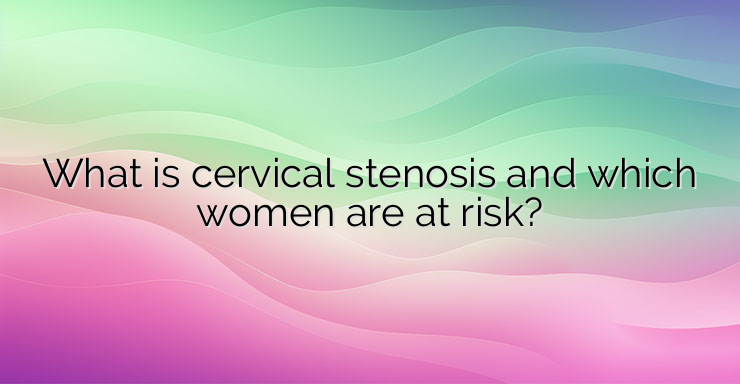Cervical stenosis is a pathological narrowing of the cervix. The term cervical stenosis is clinically defined as a narrowing of the cervix that prevents insertion of a 2.5 mm wide dilator through the cervical tooth. Cervical stenosis usually causes no symptoms and is most often discovered incidentally. Women of reproductive age may have retrograde menstruation, which increases the risk of endometriosis. Dysmenorrhea is present in up to 50% of patients with cervical stenosis. If the stenosis is severe enough, it can lead to proximal obstruction, leading to an accumulation of blood (hematometra) or pus (pyometra) in the uterine cavity. The opening of the cervix may be dilated to relieve symptoms. In cervical stenosis, the passage through the cervix (from the vagina to the main body of the uterus) is narrowed or completely closed. Cervical stenosis usually results from: Menopause, as the tissues in the cervix atrophy (thin). Cancer of the cervix or cancer of the lining of the uterus (endometrial cancer). Dysplasia is another risk factor for the development of cervical steatosis. This is a condition characterized by cellular changes in the cervix caused by infection with the human papillomavirus. Procedures that destroy or remove the lining of the uterus (endometrial ablation) in women who have persistent vaginal bleeding. Radiation therapy to treat cervical or endometrial cancer Cervical stenosis often causes no symptoms. Before menopause, the condition can be characterized by menstrual abnormalities, such as no periods (amenorrhea), painful periods (dysmenorrhea), and abnormal uterine bleeding. In some cases, cervical stenosis causes infertility because sperm cannot pass through the cervix to fertilize an egg. Other potential consequences include the impossibility of assisted reproduction such as embryo transfer and intrauterine insemination. A hematoma or pyometra can cause pain or cause the uterus to bulge. In this case, affected women feel a lump in the pelvic area. Cervical stenosis is treated only if women have symptoms such as hematoma or pyometra. In selected situations, gradual dilation of the cervix can be performed, often with ultrasound guidance. This type of treatment gives good results. Other treatment options include hysteroscopic excision of cervical tissue or, in extreme circumstances, total hysterectomy. References: https://radiopaedia.org/articles/stenosis-of-the-uterine-cervix?lang=us https://www.msdmanuals.com/home/women-s-health-issues/miscellaneous-gynecologic-abnormalities /cervical-stenosis


Leave a Reply